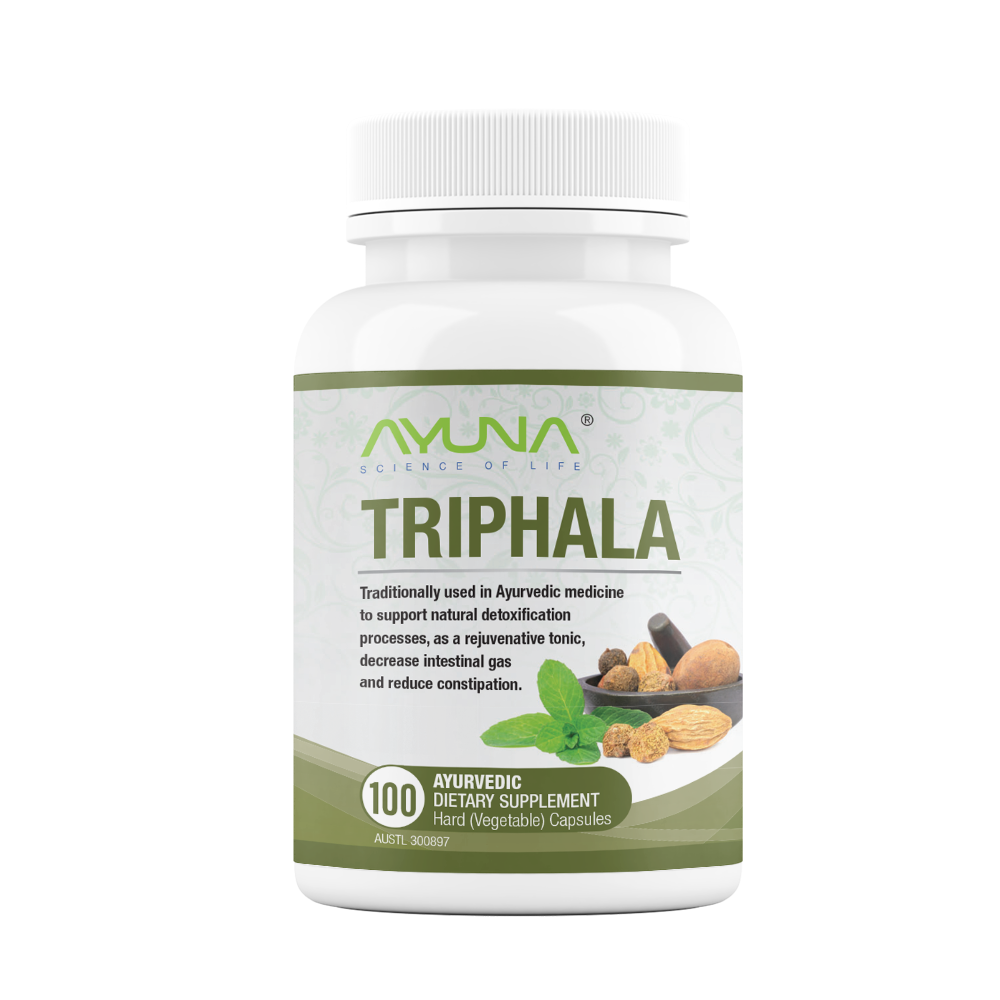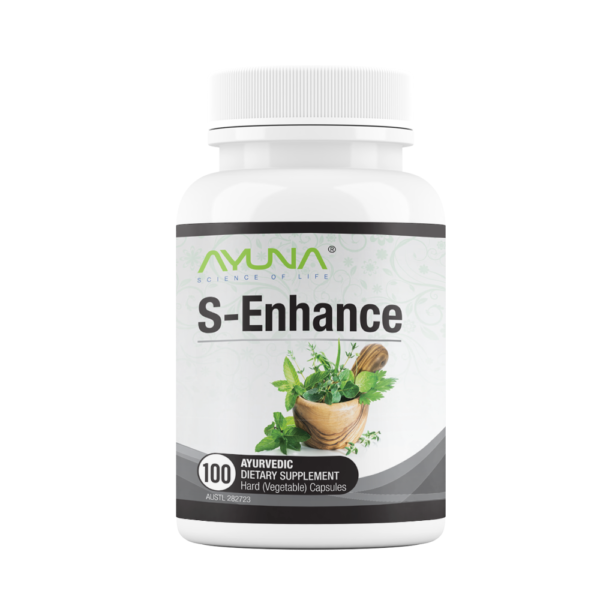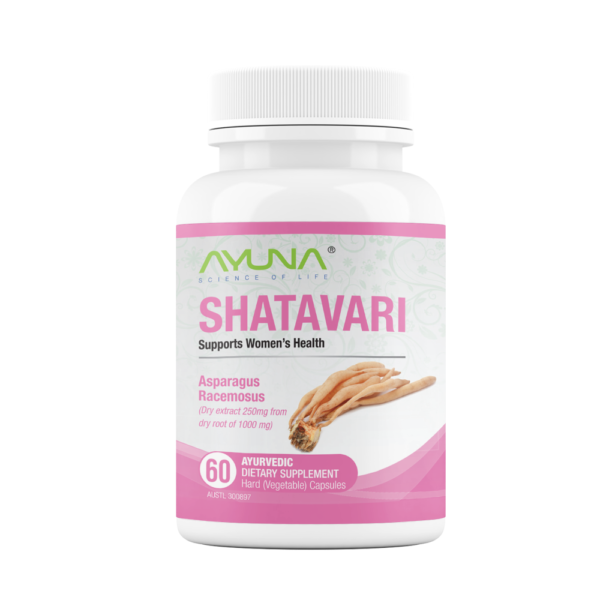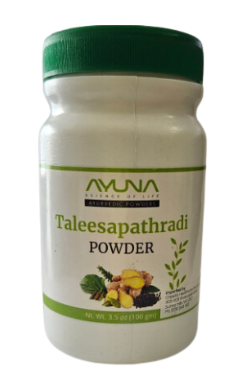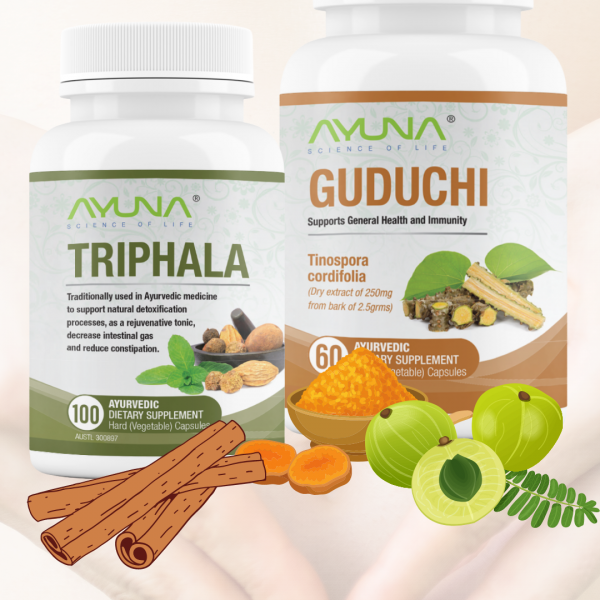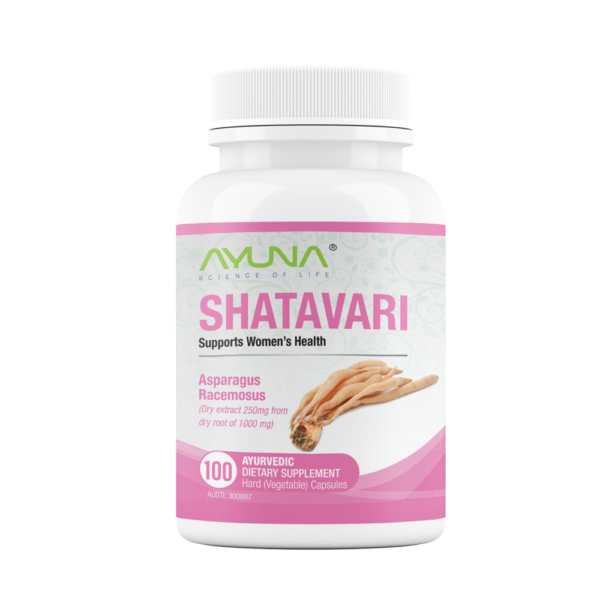TRIPHALA 100VC
For Healthy Digestion and Elimination
Ayuna Triphala is an Ayurvedic combination of three different fruits such as Amalaki, Hareetaki and Vibhitaki, used traditionally for healthy digestion and excellent rasayana dravya (rejuvenating herbal combination).
Product Information:
160 Hard Vegetable capsules
Triphala is an Ayurvedic combination of herbs for the Rejuvenation (Rasayana)
Emblica officinalis, 300mg
(Dry extract equal to 900mg)
Terminalia belerica, 100mg
(Dry Extract equal to 400mg)
Terminalia chebula, 200mg
(Dry Extract equal to 700mg)
Indications:
Traditionally in Ayurvedic Medicine as:
- Good natural source of vitamin C.
- Rich Antioxidant and helps in Rejuvenation (Rasayana)
- Relieves gas and constipation
- Good Cleanser
Warnings:
- If symptoms persist consult your healthcare professional.
- Keep out of reach of children.
- Store below 30oC.
- Bottle sealed for your protection. Do not use if tamper evident seal is broken or missing.
- Do not expose to direct sunlight
- Not advised during pregnancy and Breastfeeding
Directions:
Adults: Take 1-3 capsules each day with food, or as directed by your healthcare professional.
Children over 12 years: Take one capsule daily with food. If symptoms persist consult your healthcare professional
References:
Peterson CT, Denniston K, Chopra D. Therapeutic Uses of Triphala in Ayurvedic Medicine. Journal of Alternative and Complementary Medicine. 2017;23(8):607-614. doi:10.1089/acm.2017.0083.
Agniveśa , Cakrapidatta , Śarm RM, Dash B. Agniveaś’s Caraka sahita: Text with English Translation & Critical Exposition Based on Cakrapi Datta’s yurveda dpik, 1st ed. Varanasi, India: Chowkhamba Sanskrit Series Office, 1976
Bhishagratna K. An English Translation of the Sushruta Samhita, Based on Original Sanskrit Text, with a Full and Comprehensive Introd., Additional Texts, Different Readings, Notes, Comparative Views, Index, Glossary And Plates, 2nd ed. Varanasi, India: Chowkhamba Sanskrit Series Office, 1963
Lloyd GER, editor; (ed). Hippocratic Writings, new ed. Chadwick J, translator; , Mann WN, translator. (translators). London, England: Penguin, 1978
Baliga MS, et al. Scientific validation of the ethnomedicinal properties of the Ayurvedic drug Triphala: A review. Chin J Integr Med 2012;18:946–954
Lu K, et al. Triphala and its active constituent chebulinic acid are natural inhibitors of vascular endothelial growth factor-a mediated angiogenesis. PLoS One 2012;7:e43934.
Belapurkar P, Goyal P, Tiwari-Barua P. Immunomodulatory effects of triphala and its individual constituents: A review. Indian J Pharm Sci 2014;76:467–475
Lee HS, et al. Antioxidant effects of aqueous extract of Terminalia chebula in vivo and in vitro. Biol Pharm Bull 2005;28:1639–1644
Olennikov DN, Kashchenko NI, Chirikova NK. In vitro bio accessibility, human gut microbiota metabolites and hepatoprotective potential of chebulic ellagitannins: A case of Padma Hepaten®formulation. Nutrients 2015;7:8456–8477
Biradar YS , et al. Evaluation of anti-diarrhoeal property and acute toxicity of Triphala Mashi, an Ayurvedic formulation. J Herb Pharmacother 2007;7:203–212
Nariya M, Shukla V, Jain S, Ravishankar B. Comparison of enteroprotective efficacy of triphala formulations (Indian herbal drug) on methotrexate-induced small intestinal damage in rats. Phytother Res2009;23:1092–1098
Nariya MB, Shukla VJ, Ravishankar B, Jain SM. Comparison of gastroprotective effects of triphala formulations on stress-induced ulcer in rats. Indian J Pharm Sci 2011;73:682–
Pulok K, Mukherjee SR, Bhattacharyya S, et al. Clinical study of ‘Triphala’—A well known phytomedicine from India. Iran J Pharmacol Ther 2005;5:51–54
Rayudu V, Raju AB. Effect of Triphala on dextran sulphate sodium-induced colitis in rats. Ayu2014;35:333–338
Whiteford HA, Ferrari AJ, Degenhardt L, et al. The global burden of mental, neurological and substance use disorders: An analysis from the Global Burden of Disease Study 2010. PLoS One2015;10:e0116820.
Dhanalakshmi S, Devi RS, Srikumar R, et al. Protective effect of Triphala on cold stress-induced behavioral and biochemical abnormalities in rats. Yakugaku Zasshi 2007;127:1863–1867
Srikumar R, Parthasarathy NJ, Manikandan S, et al. Effect of Triphala on oxidative stress and on cell-mediated immune response against noise stress in rats. Mol Cell Biochem 2006;283:67–74
Carlsen MH, et al. The total antioxidant content of more than 3100 foods, beverages, spices, herbs and supplements used worldwide. Nutr J 2010;9:3.
Kumari N, et al. Effects of ionizing radiation on microbial decontamination, phenolic contents, and antioxidant properties of triphala. J Food Sci 2009;74: M109–M113 ]
Rasool M, Sabina EP. Antiinflammatory effect of the Indian Ayurvedic herbal formulation Triphala on adjuvant-induced arthritis in mice. Phytother Res 2007;21:889–894
Gurjar S, Pal A, Kapur S. Triphala and its constituents ameliorate visceral adiposity from a high-fat diet in mice with diet-induced obesity. Altern Ther Health Med 2012;18:38–45
Kamali SH, et al. Efficacy of ‘Itrifal Saghir’, a combination of three medicinal plants in the treatment of obesity; A randomized controlled trial. Daru 2012;20:33.
Patel DK, Kumar R, Laloo D, Hemalatha S. Diabetes mellitus: An overview on its pharmacological aspects and reported medicinal plants having antidiabetic activity. Asian Pac J Trop Biomed 2012;2:411–420
Rajan SS, Antony S. Hypoglycemic effect of triphala on selected non insulin dependent diabetes mellitus subjects. Ancient Sci Life 2008;27:45–49
Yang MH, Vasquez Y, Ali Z, et al. Constituents from Terminalia species increase PPARalpha and PPARgamma levels and stimulate glucose uptake without enhancing adipocyte differentiation. J Ethnopharmacol 2013;149:490–498
Tambekar DH, Dahikar SB. Antibacterial activity of some Indian ayurvedic preparations against enteric bacterial pathogens. J Adv Pharm Technol Res 2011;2:24–29
Gupta SK, Kalaiselvan V, Srivastava S, et al. Evaluation of anticataract potential of Triphala in selenite-induced cataract: In vitro and in vivo studies. J Ayurveda Integr Med 2010;1:280–286

